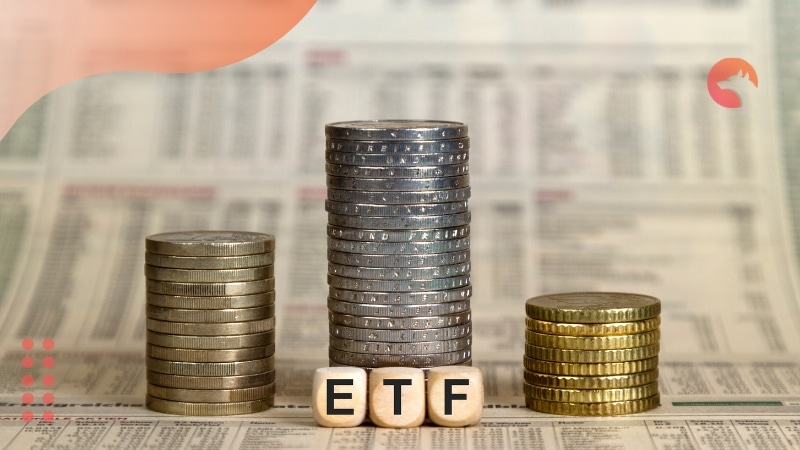The advantages of ETF investing have become a focal point for both novice and experienced investors over the last few years. As the world of finance continues to evolve, exchange-traded funds (ETFs) have emerged as one of the most flexible and cost-effective investment vehicles.
They offer a unique combination of benefits, making them an attractive option for investors seeking a diversified, efficient, and transparent way to invest in various asset classes.
ETFs combine the best features of mutual funds and individual stocks. They provide the diversification of a mutual fund, with the ability to trade like individual stocks on exchanges.
This flexibility allows investors to quickly enter or exit positions, creating opportunities for short-term gains while still enjoying the long-term benefits of diversified portfolio growth.
In recent years, the appeal of ETFs has been magnified by the rise of passive investing, where ETFs that track major indices, such as the S&P 500, offer low-cost, broad market exposure.
These funds allow investors to benefit from the growth of entire sectors or markets without the need for in-depth research into individual securities. As the landscape of investment options becomes increasingly complex, the advantages of ETF investing become more evident for those looking to optimize their portfolios in a straightforward, efficient manner.
What Are ETFs?
Exchange-Traded Funds (ETFs) are investment funds that trade on stock exchanges like individual stocks. They pool various assets, such as stocks, bonds, or commodities. Allowing investors to own a small portion of each asset within the fund.
One of the key advantages of ETFs is their ability to be bought and sold throughout the trading day, providing investors with greater flexibility compared to traditional mutual funds. Which can only be traded at the end of the day.

ETFs typically track specific indices or sectors, offering investors exposure to broad markets or targeted segments of the economy. For instance, there are ETFs focused on the Best Tech Stocks to Buy, providing easy access to high-growth tech companies. This type of investment allows individuals to gain exposure to sectors they believe will perform well. Without the need to research and buy individual stocks.
Moreover, ETFs are known for their cost efficiency, as they often have lower fees than actively managed mutual funds. With ETFs, investors also enjoy built-in diversification, which spreads risk across multiple assets.
This combination of flexibility, cost-effectiveness, and diversification makes ETFs an increasingly popular choice for investors aiming to build a well-rounded and strategic portfolio.
The Core Advantages of ETF Investing
Below are some of the most significant reasons why investors increasingly incorporate ETFs into their strategies:
1 – Cost Efficiency and Low Fees
One of the foremost advantages of ETF investing cost efficiency. ETFs generally have lower expense ratios compared to actively managed mutual funds. Because many ETFs passively managed, tracking an index rather than trying to beat it. The fund manager incurs lower research and transaction costs.
Consequently, those savings often pass through to investors in the form of reduced fees. In addition, ETFs tend to incur fewer capital gains distributions because of their in-kind redemption mechanism. That means less tax drag in taxable accounts, compared to actively managed funds that may trade more frequently.
2 – Diversification with Simplicity Advantages of ETF Investing
Another compelling benefit is immediate diversification without needing to pick individual stocks. By owning a single ETF, an investor gains exposure to dozens, hundreds, or even thousands of underlying assets. Thus, the risk associated with any single company’s poor performance is diluted.
Moreover, ETFs span a wide variety of sectors, asset classes, geographies, and investment styles. Whether you want exposure to U.S. large-cap stocks, emerging markets, bonds, real estate, or commodities, there’s likely an ETF to match.
3 – Liquidity and Intraday Trading
Because ETFs traded on exchanges, investors can buy or sell them any time the market is open. This intraday trading ability contrasts with many mutual funds, which only permit redemptions at the end-of-day net asset value. Thus, the advantages of ETF investing include the flexibility to enter or exit positions quickly in response to market developments.
In addition, ETFs generally have good liquidity, especially the larger, more established ones, so tight bid-ask spreads reduce transaction cost overhead for investors.
4 – Transparency Advantages of ETF Investing
Another key plus point is transparency. ETFs typically publish their holdings daily, so investors always know what assets they own. Such transparency helps investors monitor risk and adjust allocations as needed. In contrast, many mutual funds only report holdings quarterly or semiannually.
Furthermore, because ETFs track known indices, their strategy is often clear and predictable. You not left guessing “what is the manager doing this quarter?”, you know exactly which market or sector you are tracking.
5 – Tax Efficiency
Tax efficiency often cited among the advantages of ETF investing. Thanks to the in-kind creation/redemption process, ETFs can reduce taxable events. When an authorized participant redeems shares, the fund can hand over securities rather than selling them for cash. Thereby avoiding triggering capital gains inside the fund.
As a result, in a taxable account, ETFs often generate fewer capital gains distributions than actively managed mutual funds. Helping investors retain more after-tax returns.
6 – Flexibility and Strategy Integration Advantages of ETF Investing
ETFs are highly flexible tools. For instance, you can use them to gain exposure to niche sectors (like clean energy or robotics), or to hedge risks using inverse or leveraged ETFs (though those carry additional risks). As a result, they integrate well into broader strategies, including core-satellite, tactical tilts, or asset rebalancing approaches.
Moreover, because ETFs are available across different asset classes (stocks, bonds, commodities, currencies), you can build a fully diversified portfolio using ETFs alone if desired.
How to Choose the Right ETFs
Of course, not all ETFs are equal. To leverage the advantages of ETF investing most effectively, you should evaluate key characteristics:
- Expense Ratio: Lower is generally better, but avoid paying too little if it compromises tracking or liquidity.
- Tracking Error: Choose ETFs that closely replicate their underlying index’s performance.
- Liquidity / Trading Volume: High volume usually means tighter bid-ask spreads and easier execution.
- Underlying Holdings and Concentration: Understand which stocks or bonds constitute the ETF, and whether it’s overly concentrated in a few names.
- Fund Size / Assets Under Management (AUM): Larger funds often more stable and less likely to be closed.
- Dividend Yield and Distribution Frequency: For income-focused investors, these are important metrics.
- Tax Considerations: Depending on your country, consider how ETFs handle distributions and realized gains.
Potential Drawbacks to Consider
Although ETFs offer many benefits, they are not without drawbacks. You should be aware of these potential downsides to make informed decisions.
- Trading Costs: While ETFs tend to have lower ongoing fees, each trade may incur a commission (though many brokers now offer commission-free ETF trades). Also, because of bid-ask spreads, your actual purchase price might deviate slightly from the published net asset value.
- Tracking Error Risk: Sometimes ETF performance drifts from the underlying index due to transaction costs, sampling, or management inefficiencies. This tracking error can erode potential gains.
- Overconcentration and Hidden Risks: Although ETFs aim for diversification, some sector or thematic ETFs may end up being heavily concentrated in a handful of holdings. That increases exposure to idiosyncratic risk. Furthermore, leveraged or inverse ETFs can magnify losses if markets move against you.
- Liquidity Issues for Niche ETFs: Small or niche ETFs may have low trading volume, resulting in wide spreads and execution slippage. In extreme cases, they may even be shut down due to insufficient assets, forcing holders to sell prematurely.
Conclusion
In conclusion, the advantages of ETF investing are clear and compelling for both beginner and experienced investors. ETFs offer an ideal blend of flexibility, diversification, and cost efficiency that make them a powerful tool in building a balanced investment portfolio.
The ability to trade them like stocks provides unparalleled liquidity, while the low fees associated with most ETFs allow investors to keep more of their returns. Additionally, the transparency and simplicity of ETFs make them accessible for those new to investing. Yet robust enough to meet the needs of seasoned professionals.
Another key aspect of ETFs is their versatility. Whether you’re looking to target specific sectors, such as the “Best Tech Stocks to Buy,” or seeking broad market exposure through major indices like the S&P 500, ETFs provide an easy and cost-effective way to gain that exposure.
This flexibility enables investors to fine-tune their portfolios, whether for growth, income generation, or hedging against potential risks. Furthermore, ETFs’ tax efficiency, especially in taxable accounts, adds to their appeal as a long-term investment option.
However, like all investments, ETFs come with their own risks, including the potential for tracking errors and concentration risks in certain sectors. Therefore, it’s crucial for investors to carefully research and choose ETFs that align with their financial goals and risk tolerance.
To explore more about ETF options and how to get started, you can visit the U.S. Securities and Exchange Commission (SEC) official website for detailed information on ETFs, strategies, and resources to guide your investing journey. By leveraging the advantages of ETF investing, you can enhance your portfolio and make more informed decisions for your financial future.



